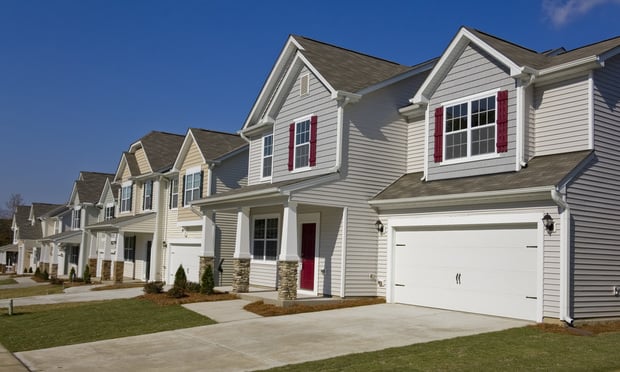A new staff report from the Senate’s Committee on the Budget is the latest word on climate change’s impact on property insurance.
Next to Fall: The Climate-Driven Insurance Crisis Is Here — And Getting Worse describes a strong correlation between exposure to climate change impacts on counties and non-renewal rates and higher premiums. The focus is on homeowner insurance, but the logic likely applies to commercial property insurance as well.
The staff requested national, county-level non-renewal data from 41 insurance companies; 23 ultimately complied. They represented about 65% of the homeowners’ insurance market. They looked at non-renewal data because people from the insurance industry told the committee “that spiking non-renewal rates, even if still low in absolute terms, are often an early warning sign of market destabilization.”
Recommended For You
The telling details come from the comparison of 2018 non-renewal rates to those of 2023. Nationally, non-renewal grew from 0.8% in 2018 to 1.06%.
The top 10 states in 2018 were North Carolina (2.07%), New Hampshire (1.25%), Massachusetts (1.18%), Arizona (1.16%), Georgia (1.16%), Colorado (1.10%), Ohio (1.03%), Alabama (1.01%), Indiana (1.00%), and Missouri (0.99%).
Here’s the list for 2023: Florida (2.99%), Louisiana (1.80%), North Carolina (1.79%), California (1.72%), Massachusetts (1.51%), Mississippi (1.49%), Oklahoma (1.45%), Rhode Island (1.37%), Connecticut (1.34%), and Hawaii (1.32%).
The lists don’t say why non-renewals happened, which could play into the interpretation. Some of the reasons are making too many claims, a fall in insurance score, the addition of non-covered features, increased liability hazards, carrier withdrawal of coverage from the area, or weather-related risks.
But the last is likely becoming more frequent. So many property insurance companies have left California that the LA Times called it a “homeowners insurance crisis,” with wildfires a major reason.
Florida has also seen multiple carriers pull out of the state, although the reasons are more complex according to the Insurance Information Institute. Hurricanes and flooding are major issues, but so are lawsuits. Florida sees only 9% of national homeowner claims but 79% of homeowner lawsuits.
While the focus has been on homeowner insurance, such decisions are financial and eventually the same logic will have to apply to commercial property. Figures that the Insurance Information Institute has compiled on U.S. natural catastrophe estimated insured losses run as follows: 2010, $13.6 billion; 2011, $35.8 billion; 2012, $57.9 billion; 2013, $12.8 billion; 2014, $15.3 billion; 2015, $16.1 billion; 2016, $23.8 billion; 2017, $78.0 billion; 2018, $52.3 billion; 2019, $25.5 billion; 2020, $74.0 billion; 2021, $92,0 billion; 2022, $98.9 billion; and 2023, $79.6 billion.
A report from insurance brokerage MarshMcLennan Agency said that commercial property insurance rates have seen year-over-year increases across 24 consecutive quarters and that rate increases averaged 11% at the end of 2023. The agency said owners with "significant exposures and sustained losses" can expect rates to climb by 50% to 100%.
A mid-year estimate on projected CRE insurance costs by the Deloitte Center for Financial Services said, “For states with the greatest extreme weather risk, current costs of $3,077 could almost double to hit $6,062 per building per month, a 10.2% CAGR [Compound Annual Growth Rate] by 2030.” Low-risk states will not be spared. Their premiums could shoot up from $,1,935 per building per month now to $3,299 by 2030 at a 7.9% CAGR. The average premium for commercial buildings outside these states is projected to rise from $2,726 in 2023 to $4,890 in 2030 at a CAGR of 8.7%.
Eventually, the costs become unsustainable.
© 2025 ALM Global, LLC, All Rights Reserved. Request academic re-use from www.copyright.com. All other uses, submit a request to [email protected]. For more information visit Asset & Logo Licensing.







